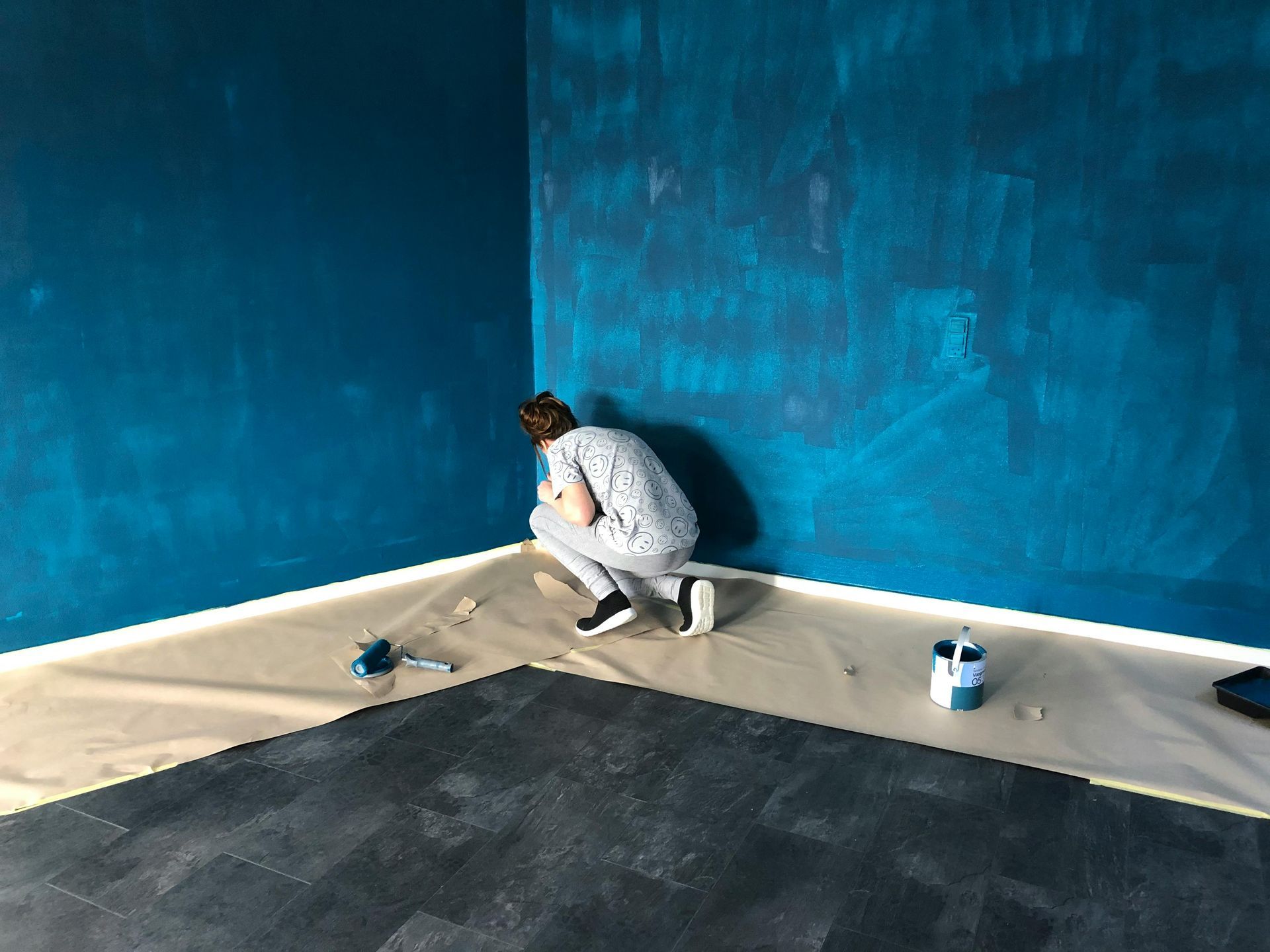DIY Concrete Floor: The Pros and Cons

DIY Concrete Floor: The Pros and Cons
Thinking about tackling a DIY concrete floor project? While the allure of saving money and showcasing your handy skills might be tempting, it's essential to weigh the pros and cons carefully. Today on Palette & Patina, we'll explore the advantages and disadvantages of DIY concrete flooring and why entrusting the job to a professional is often the superior option.
Pros of DIY Concrete Floor:
Cost Savings: One of the primary reasons DIY enthusiasts opt for concrete flooring projects is the potential cost savings. By eliminating labor costs, you may be able to reduce the overall expenses associated with the project.
Creative Control: DIY projects allow you to exercise full creative control over the design and execution of your concrete floor. From choosing the color and texture to experimenting with decorative techniques, DIYers enjoy the freedom to customize their floors according to their vision.
Learning Experience: Undertaking a DIY concrete floor project can be a valuable learning experience, providing you with new skills and knowledge about concrete mixing, pouring, and finishing techniques. Plus, the sense of accomplishment from completing the project yourself can be immensely satisfying.
Cons of DIY Concrete Floor:
Lack of Expertise: Concrete flooring requires specialized knowledge and expertise to achieve professional-quality results. Without proper training and experience, DIYers may struggle to properly prepare the subfloor, mix the concrete, and achieve a smooth, level finish.
Time-Consuming: DIY concrete flooring projects can be incredibly time-consuming, especially for beginners. From surface preparation and concrete mixing to pouring and finishing, each step of the process requires careful attention to detail and can take days or even weeks to complete.
Risk of Errors: Inexperienced DIYers are more susceptible to making mistakes during the concrete flooring process, such as improper mixing ratios, uneven pouring, or inadequate sealing. These errors can compromise the structural integrity and aesthetics of the floor, leading to costly repairs or replacements down the line.
Limited Resources: DIYers may not have access to the same resources, equipment, and materials that professional contractors utilize for concrete flooring projects. Without proper tools and supplies, achieving professional-grade results can be challenging, if not impossible.
Why Hiring a Professional is the Smarter Choice:
Expertise and Experience: Professional concrete contractors have the knowledge, skills, and experience to deliver superior results efficiently and effectively. They understand the intricacies of concrete flooring and can ensure proper surface preparation, precise mixing, and flawless finishing.
Time and Efficiency: Hiring a professional saves you time and effort by streamlining the concrete flooring process from start to finish. Professionals have access to specialized equipment and techniques that enable them to complete the project in a fraction of the time it would take an amateur DIYer.
Quality Assurance: Professional concrete contractors use high-quality materials and proven techniques to achieve durable, long-lasting concrete floors that meet industry standards. With a focus on craftsmanship and attention to detail, professionals deliver results that exceed DIY expectations.
Peace of Mind: By entrusting your concrete flooring project to a professional, you can enjoy peace of mind knowing that the job is in capable hands. Professional contractors handle all aspects of the project, from initial planning to final cleanup, allowing you to relax and enjoy your new concrete floor without stress or worry.
While DIY concrete flooring projects may seem appealing in theory, the reality is that they often come with significant challenges and risks. By hiring a professional concrete contractor, you can benefit from their expertise, efficiency, and commitment to quality, ensuring a beautiful, durable floor that enhances the beauty and value of your home. Don't gamble with your concrete floor—choose the smart option and leave it to the professionals.



